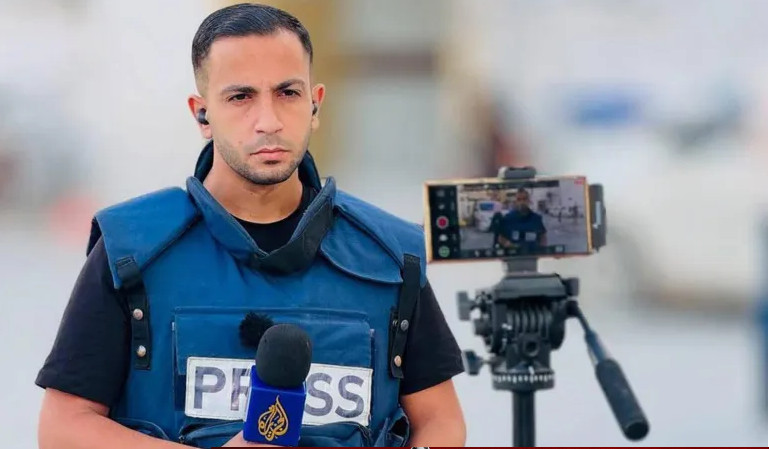They Said It Was a Strike. What They Didn’t Say: Israel, Gaza & the Vanishing Truth Behind the Al Jazeera Killings

The Official Story about the Al jazeera Killings
On August 11, 2025, multiple outlets including Al Jazeera, Reuters, BBC, and France 24 reported that an Israeli airstrike in Gaza killed five Al Jazeera journalists, including veteran correspondent Anas al-Sharif. Israel’s military claimed it was targeting Hamas operatives in Gaza City, suggesting that the journalists were “in close proximity to militants.” The attack comes amid an intensified Israeli offensive following Prime Minister Benjamin Netanyahu’s vow to expand operations in the enclave.
Global reaction was swift: media rights groups like Reporters Without Borders condemned the killings, calling them part of a disturbing pattern of targeting press in conflict zones. Governments from Australia to South Africa called for investigations, though official UN statements remained cautious.
That’s the mainstream framing — a tragic but almost routine episode in the Gaza war, packaged for rapid consumption and quick outrage.
First, the press-freedom context: Gaza is already one of the deadliest places in the world for journalists. Since October 2023, at least 150 reporters have been killed — the highest toll in modern conflict reporting. Al Jazeera in particular has faced sustained losses, including the 2022 killing of Shireen Abu Akleh in the West Bank, which multiple investigations linked to Israeli fire despite official denials.
Second, the targeting question isn’t just about “collateral damage.” Multiple witnesses claim the journalists were covering a civilian evacuation when the missile struck. Photos from the scene show clearly marked “PRESS” vests. Under international humanitarian law — specifically the 1949 Geneva Conventions and their additional protocols — journalists in war zones are considered civilians unless they directly participate in hostilities. That’s why human-rights lawyers say this incident could qualify as a war crime if intent or recklessness is proven.
Third, the coverage rarely mentions the chilling effect these killings have on the ground. With fewer reporters, especially local Arab journalists, the narrative becomes easier to control for the better-resourced military side. International correspondents often rely on local fixers and camerapeople — many of whom are now dead or too afraid to work. In short, silencing the eyes and ears of the public is not just a side effect; in some interpretations, it’s a tactic.
Finally, there’s the diplomatic double standard. Western governments that strongly condemned Russia’s killing of journalists in Ukraine have used notably softer language here — “deep concern” rather than “outrage” — raising questions about political alliances and selective application of press-freedom principles.
War is hell. But the PR around war? That’s theatre — and the audience is us.
Think about it: somewhere in a Tel Aviv or Jerusalem briefing room, a spokesperson probably practiced the phrase “tragic but unavoidable” in front of a mirror, like an actor prepping for opening night. Across the ocean, a State Department official nods gravely for the cameras, then checks their phone for lunch plans.
Meanwhile, on the ground in Gaza, a cameraman’s lens is still warm from the sun, lying in rubble. The irony? The images it captured will now be filtered through second-hand accounts — or worse, through official talking points.
It’s like trying to describe a football match without the commentators, the replays, or even the fans — all you get is the referee’s version of events. And in this case, the referee is also one of the teams.
If we’re honest, we’ve normalised the killing of journalists so much that “press freedom” now sounds like a luxury item — like artisanal coffee. Something we admire but don’t expect to see every day. That’s not just tragic; it’s dangerous.
Wrap-Up & Takeaway
Maybe the real casualty here isn’t just five journalists. Maybe it’s the very idea that truth in war is worth protecting. When cameras are silenced, narratives become easier to script, and facts are whatever the survivors with the loudest microphones say they are.
So next time you see a headline about “tragic but unavoidable” loss in a war zone, ask: unavoidable for whom? And whose story just got buried with the bodies?
The Other Side of the Story – Because headlines don’t always tell the whole truth.
Source: Aljazeera
More Articles: Media Wall